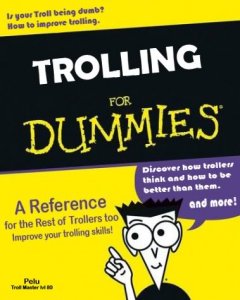This sub-forum is a final attempt to pull into one place, hundreds of thousands of words written here, many of them restating the same position, which amount to one, simple, statement. That statement is this ...
[HR][/HR]
1. What we call 'sound' is nothing more than localised and fast moving barometric pressure variations around our head. That's no different from looking-up today's barometric pressure in your town, and imagining that same pressure very rapidly pumping up and down. The speed of the up and downs are what we call frequency. The peaks of the up and downs are what we call loudness or level.
2. The only - only - way our bodies can detect those pressure variations is by using a microphone and measuring equipment to observe, on a computer screen, the pressure wave going up and down, or by permitting the pressure wave to enter our ear canal. Once in there, according to a physical process, the up and downs are turned into electrical energy. Any subsequent evaluation of the pressure wave by the brain, such as the evaluation of the spectral content of the wave, are evaluations of how much energy there is in the pressure wave, frequency band by frequency band.
3. No two humans have the exactly the same physical hearing mechanism. No two humans have the same hearing acuity. Human hearing performance peaks before puberty and declines progressively thereafter. A 65 year old will, certainly, have less hearing acuity and narrower frequency range than a 45 year old. A correct balance for a pensioner's taste will sound extremely bright to a youngster.
4. Processes occur in every listener's brain which interpret those electrical signals. No two listeners will interpret the sound the same way. The mother of a small child will, without being conscious of it, experience a physical, chemical and hormonal response when she hears a child crying. The body of a mature male will never respond that way.
5. There is an absolute impossibility of applying adjectives that you may ascribe to an audio event ('warm', 'involving', 'foot tapping') to others as a matter of objective fact. They are merely generic marketing words. They have no universal meaning. There is no universally accepted lexicon of hi-fi. Every listener is, in effect, listening in their own language.
6. Audio enthusiasts the world over experience sound, interpret sound and like or dislike sound based on a complex algorithm of experiences, sensations and abilities. Although there superficially appears to be a common lexicon amongst those who listen and critique audio, in fact, there is little or no commonality at all. One man's 'rich' bass will be another man's 'boomy bass'. Both are equally valid opinions, seen from different personal perspectives.
7. Those who take fiddling with audio equipment seriously, and who invest time and money in their hobby, arrive by whatever internal processes at rigid, highly personal views that one product has merits over another; one is better, one is best. They then communicate these views to others, who, having no more means of independently validating those opinions, absorb them into their own belief system, in whole or in part. And so the inter-personal feedback cycle continues.
8. Audiophiles truly, deeply and passionately believe in their own insight into the merits of audio equipment. They will argue and promote those views almost to the death when we know, that it is unlikely that other one single human could be expected to have the same decoding process within their ear/brain.
9. There an almost total absence of scientific method in the critiquing of audio equipment. This is an ideal situation for the marketing of a technical science-based product to a non-technical consumer.
10. Methods have been developed, tested and used to properly compare audio equipment (called A-B testing) to reveal the objective (impartial) truth (as far as truth can be known by numbers of individuals in the observable universe). These methods have three core observations:
a) That the ear is highly influenced by the loudness of a sonic event. A police siren at half a mile is curious: at 20 feet, terrifying. Loudness has to be controlled before any credible comparison can be undertaken
b) If the observer can see/smell/taste/touch the equipment under comparison, he will develop a preference based on some internal processes within his brain partially influenced by non-sonic sensory input
c) The ordinary ear has a completely reliable memory about as long as a goldfish memory: a couple of seconds. Any remembered sonic events separated by a gap greater than a second or two cannot be considered
objective. This is because of a conversion process from short to long term memory storage which condenses, simplifies and packages a sensory input into a 'ghost'
impression. These impressions are entirely personal to the listener. They rapidly fade and/or take on modifications and restructuring with the passage of time. I would not trust the objectivity of my own audio memory more than a second or two for making business-critical, time separated comparisons. I would not expect others to have significantly better
objective audio memory, even if they have a subjective memory of sonic
impressions over a lifetime.
You can read about the human memory on the BBC website,
here.
11. The means to properly compare A with B (the relay change-over box) can be built with simple tools in a few hours for about $25. There is no excuse for not building and using such a unit. We wholeheartedly recommend the use of the A-B comparator when selecting audio equipment, including loudspeakers, as we do with competitive models to pick out strengths and weaknesses.
12. Comments like 'I have spent a lifetime listening to amplifiers ... I can always tell the Model 123 from the rest, and the 456 has qualities that no other amp can ever have' are the product of self-delusion unless they are the outcome of a properly constructed instantaneous A-B comparison. Recognise such claims with subjective and personal, not universal truths.








